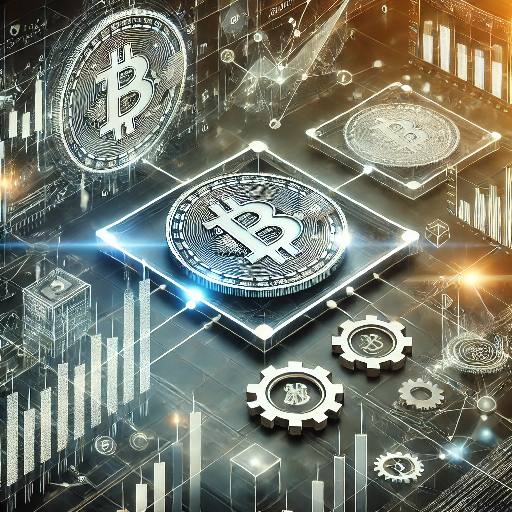Uniswap is one of the leading decentralized exchanges (DEX) that has significantly impacted the world of decentralized finance (DeFi). By leveraging blockchain technology and smart contracts, Uniswap enables users to trade cryptocurrencies without relying on a centralized authority. This article will delve into the various aspects of Uniswap, its innovative features, and its role in shaping the future of finance.
What is Uniswap?
Uniswap is a decentralized exchange protocol running on the Ethereum blockchain. Unlike traditional exchanges, Uniswap functions without an order book or a central intermediary. Instead, it utilizes an automated market maker (AMM) system, allowing users to trade directly from their wallets using liquidity pools.
The Genesis of Uniswap
Uniswap was created by Hayden Adams and launched in November 2018. The idea was to provide a more efficient and user-friendly platform for cryptocurrency trading. Adams was inspired by Vitalik Buterin’s concept of decentralized exchanges and decided to develop a protocol that could offer better liquidity and accessibility to traders worldwide.
How Uniswap Works
Automated Market Maker (AMM)
At the core of Uniswap is its Automated Market Maker (AMM) model. Unlike traditional exchanges that use order books to match buyers and sellers, Uniswap’s AMM relies on liquidity pools. These pools are funded by users who deposit their assets into the protocol, earning fees in return. The AMM algorithm determines the price of assets based on the ratio of tokens in the pool, ensuring continuous liquidity.
Liquidity Pools in Uniswap
Liquidity pools are smart contracts that hold reserves of two tokens. For instance, an ETH/USDC pool would contain both Ethereum (ETH) and USD Coin (USDC). When a user wants to trade ETH for USDC, they interact with the liquidity pool, swapping one token for the other. Liquidity providers (LPs) are incentivized to add assets to these pools, as they earn a portion of the trading fees generated by the protocol.
Trading on Uniswap
Trading on Uniswap is straightforward. Users connect their Ethereum wallets (such as MetaMask) to the Uniswap interface, select the tokens they wish to trade, and execute the transaction. The entire process is decentralized, meaning there are no intermediaries involved, and users retain full control over their assets.
The Uniswap Token (UNI)
Introduction to Uniswap
In September 2020, Uniswap launched its governance token, UNI. The introduction of UNI marked a significant milestone for the protocol, as it transitioned towards a more community-driven governance model. UNI holders have the power to propose and vote on changes to the protocol, including fee structures, new features, and other important updates.
Distribution and Incentives
Uniswap distributed 1 billion UNI tokens at launch, with a significant portion allocated to past users of the platform. This „airdrop“ rewarded early adopters and liquidity providers, fostering a sense of community and encouraging further participation in the protocol. Additionally, UNI tokens are used to incentivize liquidity provision through yield farming programs.
The Impact of Uniswap on DeFi
Democratizing Finance in Uniswap
Uniswap has played a pivotal role in democratizing finance by providing an open and permissionless trading platform. Anyone with an internet connection and an Ethereum wallet can trade on Uniswap, without needing to go through a lengthy registration process or adhere to strict KYC (Know Your Customer) regulations. This accessibility has empowered individuals worldwide to participate in the global financial system.
Lowering Barriers to Entry
Traditional financial systems often have high barriers to entry, such as minimum account balances and fees. Uniswap, on the other hand, allows users to trade with minimal amounts of capital and charges relatively low fees. This inclusivity has opened up new opportunities for retail investors and smaller traders who were previously excluded from participating in financial markets.
Enhancing Liquidity
Liquidity is a crucial factor for the success of any financial market. Uniswap’s AMM model ensures that there is always liquidity available for trading, as long as there are assets in the liquidity pools. This continuous liquidity provision has attracted a wide range of assets to the platform, making it one of the most versatile and liquid DEXs in the DeFi ecosystem.
Challenges and Criticisms
Impermanent Loss
One of the challenges faced by liquidity providers on Uniswap is impermanent loss. This occurs when the price of the deposited assets changes relative to each other, potentially leading to a loss in value for the liquidity provider. Although trading fees can offset this loss, it remains a risk for LPs, especially in volatile markets.
Scalability and Gas Fees
Uniswap operates on the Ethereum blockchain, which has faced scalability issues and high gas fees during periods of network congestion. These fees can be prohibitively expensive for smaller trades, limiting the platform’s accessibility. However, with the ongoing development of Ethereum 2.0 and Layer 2 solutions, these issues are expected to be mitigated in the future.
The Future
Continued Innovation
Uniswap continues to innovate and expand its capabilities. The launch of Uniswap V3 introduced the concept of concentrated liquidity, enabling liquidity providers to allocate their assets within specific price ranges. This feature enhances capital efficiency and provides more flexibility for liquidity providers. Additionally, Uniswap’s integration with various Layer 2 solutions aims to reduce gas fees and improve scalability.
Governance and Decentralization
As Uniswap evolves, its governance model will play a crucial role in shaping its future. The decentralized nature of UNI token governance empowers the community to make decisions that align with their interests. This approach fosters transparency and ensures that the protocol remains adaptable to the changing needs of its users.
Expanding Ecosystem
Uniswap’s success has inspired a plethora of projects and integrations within the DeFi ecosystem. Numerous DeFi protocols leverage Uniswap’s liquidity pools and trading infrastructure, creating a synergistic relationship that benefits the broader DeFi community. This interconnected ecosystem is likely to grow further, enhancing the overall resilience and utility of decentralized finance.
Conclusion
Uniswap has undeniably revolutionized the decentralized finance landscape with its innovative approach to cryptocurrency trading. By leveraging the power of blockchain technology and smart contracts, Uniswap has created a platform that is accessible, efficient, and user-centric. Despite facing challenges such as impermanent loss and high gas fees, Uniswap continues to evolve and adapt, driving the growth of DeFi and democratizing access to financial markets. As the DeFi ecosystem expands and matures, Uniswap’s role as a pioneer and leader in the space is set to become even more significant.

















